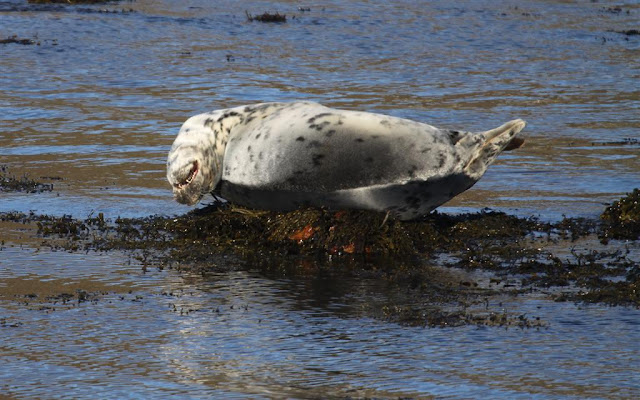The first bird of the morning was a cracking adult male Black Redstart outside our front door. We then opened the garden net and trapped 12 Blackcap, a Goldcrest, six Chiffchaff and five Willow Warbler. A Golden Plover flying overhead was later found freshly predated in the Gorse.
As we headed to Nant it was obvious that a large fall was taking place. We opened a single 60 foot net and caught 103 birds in the following 90 minutes, the majority of which were Willow Warblers and one of which was a control. A conservative estimate would be that over 350 Willow Warblers passed through the island today.
It really feels like the start of spring now with dozens of Wheatear lining the walls of the island. (c) Richard Brown
This smart first year male Stonechat found the nets at Cristin. With only one pair nesting last year its great to see at least three males at the moment. (c) Richard Brown
The Western Conifer Seed Bug is originally native to Western USA, but was accidentally introduced to Northern Italy in 1999 with an import of timber. By 2007 it had expanded its range over much of Europe from Slovenia to France. A large influx arrived on the south coast of England in 2008. This was believed to be natural range expansion from the original 1999 introduction in Italy. They have also reached as far a field as Japan. The Western Conifer Seed Bug feeds on the sap of developing pine cones, with one of its host plants being Scots Pine, of which there are a few on the island. Amazingly this insect has also evolved to feed on the compounds made by trees to deter herbivores. This is the second island record following one last year. (c) Giselle Eagle














































